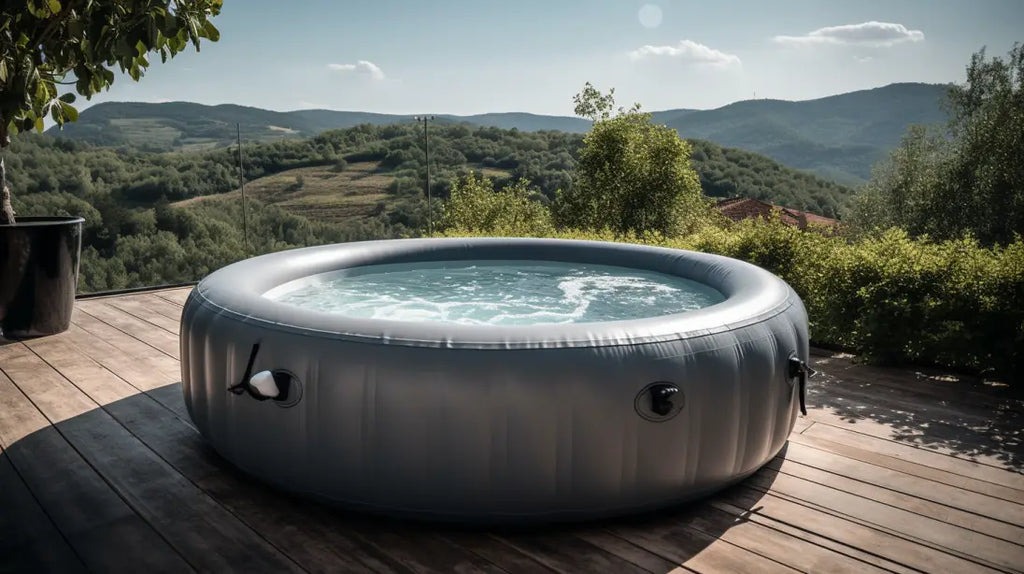Introduction: Why a Quality Hot Tub Cover Matters
When it comes to maintaining a hot tub, a high-quality cover is indispensable. Not only does it help to keep your hot tub clean and free of debris, but it also plays a crucial role in energy efficiency and water temperature maintenance. Investing in the right hot tub cover can enhance your overall hot tub experience, reduce maintenance efforts, and save you money on energy costs. In this guide, we’ll explore the various aspects of hot tub covers, including types, materials, benefits, and tips for choosing the best cover for your needs.
Types of Hot Tub Covers: Finding the Right Fit
Hot tub covers come in several types, each designed to meet different needs and preferences. The most common types are traditional foam covers, inflatable covers, and custom-fit covers. Traditional foam covers are known for their durability and insulating properties. They are typically made from a thick layer of foam encased in a vinyl or leather-like material. Inflatable covers are a more recent innovation, providing a lightweight and easy-to-store option. Custom-fit covers, on the other hand, are tailored specifically to the dimensions of your hot tub, ensuring a snug and secure fit. Understanding these types will help you make an informed decision based on your specific requirements and budget.
Materials: Choosing the Right Material for Durability and Insulation
The material of your hot tub cover significantly affects its performance and longevity. The most common materials used are vinyl, polyester, and marine-grade fabric. Vinyl covers are popular due to their water resistance and ease of cleaning. They are often reinforced with foam insulation to enhance energy efficiency. Polyester covers are known for their lightweight properties and are often used in inflatable models. Marine-grade fabrics are highly durable and resistant to harsh weather conditions, making them ideal for outdoor hot tubs. When selecting a material, consider factors such as climate, frequency of use, and the level of protection you need.
Insulation and Energy Efficiency: Keeping Costs Down
One of the key benefits of a hot tub cover is its ability to improve insulation and energy efficiency. A well-insulated cover helps to retain heat, reducing the need for constant heating and lowering your energy bills. Foam-filled covers are particularly effective in this regard, as they provide excellent insulation properties. Additionally, some covers feature a thermal barrier or reflective layer to further enhance heat retention. When choosing a cover, look for features such as high-density foam and reinforced stitching, which contribute to better insulation and longer-lasting performance.
Safety Features: Ensuring Safe Use of Your Hot Tub
Safety is a crucial consideration when selecting a hot tub cover. Covers with safety features can prevent accidents and ensure the well-being of children and pets. Look for covers with locking mechanisms or straps that secure the cover in place and prevent accidental opening. Some covers also come with additional safety features, such as reinforced edges and built-in handles for easy handling. By choosing a cover with appropriate safety features, you can enjoy peace of mind knowing that your hot tub is secure and protected from unauthorized access.
Maintenance and Care: Keeping Your Cover in Top Condition
Proper maintenance and care are essential for extending the life of your hot tub cover. Regular cleaning helps to prevent mold, mildew, and debris buildup, which can affect the cover’s performance and appearance. Use a mild soap solution and a soft cloth or sponge to clean the cover, avoiding harsh chemicals or abrasive materials. Additionally, it’s important to inspect the cover regularly for signs of wear and tear, such as cracks or seams coming loose. Addressing minor issues promptly can prevent more significant problems and ensure that your cover continues to provide optimal protection and insulation.
Custom Fit vs. Standard Covers: What to Consider
Choosing between a custom-fit cover and a standard cover depends on your hot tub’s dimensions and your personal preferences. Custom-fit covers are designed specifically for the exact measurements of your hot tub, providing a perfect fit and enhanced protection. They are particularly useful for irregularly shaped or uniquely sized hot tubs. Standard covers, on the other hand, are available in various sizes and shapes, making them a more cost-effective option. However, they may not offer the same level of coverage and insulation as custom-fit models. Consider your hot tub’s size, shape, and usage patterns when deciding which type of cover best suits your needs.
Weather Resistance: Protecting Your Hot Tub Year-Round
A hot tub cover’s ability to withstand various weather conditions is an important factor to consider, especially if your hot tub is located outdoors. Look for covers made from weather-resistant materials that can handle exposure to sun, rain, snow, and wind. UV-resistant fabrics and water-resistant coatings are essential for ensuring that your cover remains functional and looks good over time. Additionally, some covers come with additional features such as reinforced seams and heavy-duty straps to enhance their durability in harsh weather conditions.
Installation and Removal: Ease of Use
The ease of installation and removal is another important aspect of choosing a hot tub cover. Some covers are designed for easy handling, with features such as built-in handles and lightweight materials. Others may require more effort to install and remove, particularly if they are large or heavy. Consider how frequently you will be using the cover and whether you need a model that can be easily managed on your own. Additionally, some covers come with a lift system or cover lifter accessory, which can make the process of handling the cover much more convenient.
Cost Considerations: Balancing Budget and Quality
Hot tub covers are available at a wide range of price points, so it’s important to find a balance between cost and quality. While it may be tempting to opt for a cheaper cover, investing in a higher-quality model can offer better performance, durability, and energy efficiency in the long run. Consider factors such as material, insulation, and safety features when evaluating the cost of a cover. Keep in mind that a well-made cover can save you money on energy bills and reduce the need for frequent replacements, making it a worthwhile investment.
Conclusion: Making the Best Choice for Your Hot Tub
Choosing the perfect hot tub cover involves considering various factors, including type, material, insulation, safety features, and ease of use. By understanding your options and evaluating your specific needs, you can make an informed decision that enhances your hot tub experience and ensures long-lasting protection. Whether you opt for a custom-fit cover or a standard model, investing in a high-quality cover will help you enjoy your hot tub to the fullest while keeping it in top condition.


